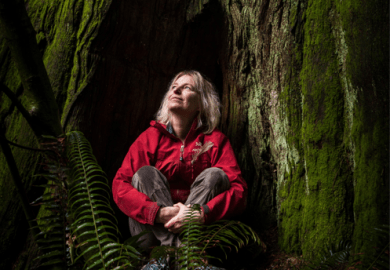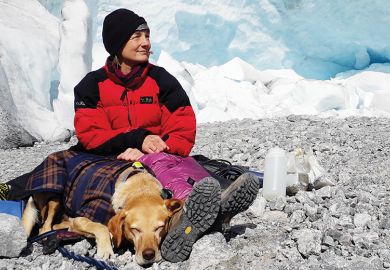Within the scenically and geologically spectacular American Southwest are well-exposed examples of most types of rocks, geological complexes and structures of all ages, from 2 billion years to the present. Much that is seen can be related to interactions between tectonic plates. The region provides marvellous examples with which to illustrate concepts and diverse ancient and modern geological processes.
This book's subtitle claims such breadth, and the preface says it provides basic knowledge of the region for advanced undergraduate and graduate geology students - but no audience will find the promises fulfilled.
Research by Scott Baldridge, a geologist at the US Department of Energy's Los Alamos National Laboratory, has concentrated on young volcanic rocks of the Rio Grande rift. He expands here to the huge region from central Texas and northeast Mexico to the Pacific coast of southern California and Baja California, which he discusses by time slices.
He begins each section with an abstract discourse on plate-tectonic events that lacks comprehension as to how plates interact and how geologic complexes relate to those interactions. He then jumps to local details and interpretations that are given little relevance for regional frameworks, understanding of processes or explanation of how the interpretations were reached.
Inconsistencies abound. The many maps and diagrams are from reports by others and are so poorly integrated with each other and the text that they often conflict. Thus the text descriptions of Precambrian rocks of Arizona, the accompanying map and the cross-section drawing are all mutually incompatible. Of the many field photographs, most are coarsely screened black-and-whites that do not obviously show what is claimed. And only perhaps a third of the freely used specialist terms appear in the glossary.
Almost half of the book deals with the flat, thin continental-platform strata of the scenic but geologically dull southern Colorado Plateau - one sixth of the topic area, one quarter of its time span.
Even descriptions err: strata formed on "tidal mudflats" hundreds of kilometres from the seashore, and the great Saharan sand-sea formations of the plateau are made of "sand and silt".
The rest of the topic area and time span contains most of the geology related to the plate tectonics of the subtitle, and is treated primarily with abstract interpretations asserted as facts, lacking explanations or evidence.
Everything to do with plate tectonics at all scales seems garbled. An assemblage with abundant quartzite is said to have formed in an island arc, yet there is almost no quartz sand in island arcs. An ancient basalt is claimed to have formed as oceanic crust, which by definition means directly on ultra-mafic mantle rocks, and yet is described as erupted through older rocks of continental type.
Classical structural geology fares no better: for example, vast thin thrust sheets were pushed from behind (physical nonsense, disproved by all associated geology); mid-Tertiary Basin-Range extension was mechanically very different from that now operating (untrue), and so on.
The book's concept is good, but the execution disappoints.
Warren B. Hamilton is a senior scientist in the department of geophysics, Colorado School of Mines, Golden, Colorado, US.
Geology of the American Southwest: Journey Through Two Billion Years of Plate-Tectonic History
Author - W. Scott Baldridge
Publisher - Cambridge University Press
Pages - 280
Price - £55.00 and £19.99
ISBN - 0 521 81639 4 and 01666 5
Register to continue
Why register?
- Registration is free and only takes a moment
- Once registered, you can read 3 articles a month
- Sign up for our newsletter
Subscribe
Or subscribe for unlimited access to:
- Unlimited access to news, views, insights & reviews
- Digital editions
- Digital access to THE’s university and college rankings analysis
Already registered or a current subscriber? Login



